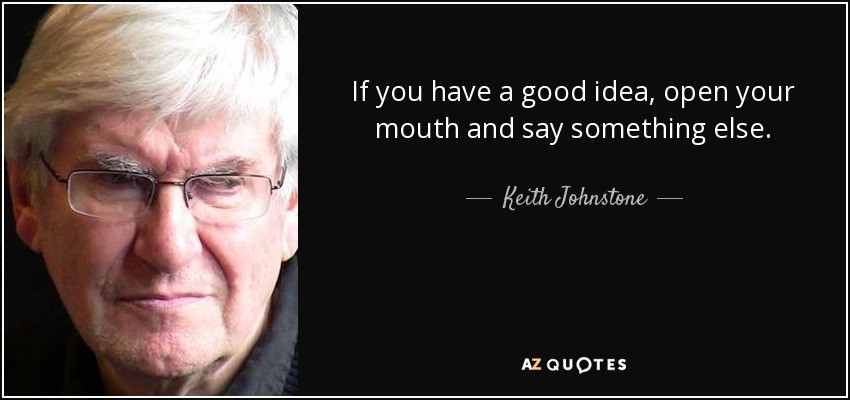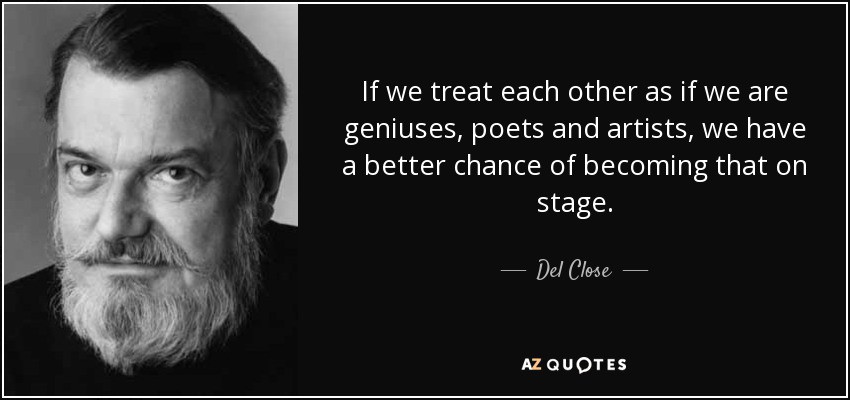Collective Improvisation: A review and thoughts...
Table of Contents
May 2016, I am invited to Llubjana, Slovenia to teach and perform improvisation. Hosted by the three heads of the Cerberus of Slovenian improvisation Ju_š_, Vid and Peter at IGLU, I had an incredible time seeing what life was really like in Llubjana.
The improvisational scene is alive and well in Llubjana, with monthly guests from around the world and some lively improv shows in Slovenian and English, it is truly a community worth venturing to for the adventurous improvisor. As well, word on the street is there is a Eurovision inspired Improvision show that draws hundreds and hundreds every year.
Upon departing, Ju_š_ was kind enough to give me a book as a gift. By a fellow Slovenian improvisor named Sonja Vilč, the book is Collective Improvisation: From Theatre to Film.
The book is composed of three chapters: 1) The Roots and Teachings of Modern Improvisation, 2) Using the Principles of Improvisation in Film Creation, 3) Looking forward: The Promises of Improvisation.
While the books main focus is the use of improvisational techniques in film creation, I was most interested in the background research on the roots of modern improvisational techniques and sections on the philosophies of improvisation.
I enjoy what I would consider to be the European explorations of improvisational philosophies, and this book is full of great discourse and thoughts on the romantic ideals of what happens when you start making things up.
The Roots of Modern Improvisational Teaching #
Vilč explores the history of modern improvisational teaching, clearly laying out a trajectory of learning and evolution of theory dating back to the late 1800’s and early 1900’s. I enjoy how she clearly delineates some lists of ideas and concepts:
Four Johnstone-ian Basic Principles of Improvisation (pg 27):
- Accept and embrace your first impulse;
- Accept offers made by your other actors;
- Advance the action by truthful reaction to what is happening; and
- Advance the narrative by connecting previously established elements.
Three Del Close-ian (along with Elaine May and Theodore Flicker) Basic Principles of Improvisation (pg 67):
- Do not deny what is said or done onstage.
- Take the active as opposed to the passive choice.
- The actor’s business is to justify.
She delves into Del’s discussions on where laughter comes from (pg 73): “Laughter is a response to a gestalt formation where two previously incompatible or dissimilar ideas suddenly form into a new piece of understanding. The energy release during that reaction comes out in laughter”. Which is all to say, that “the truth is funny”.
Vilč discusses the translation of the above principles and other thoughts and writings by improvisational innovators (Johnstone, Viola Spolin, Compass Players, Close, David Shepard, etc., pg. 87):
- The idea of individual genius is replaced by the collective group mind.
- The idea of a script is replaced by an emergent narrative, formed through the multitude of artistic, and audience, interactions.
- The idea of a final product as the goal is replaced by a focus on the risks and failures of an ongoing process.
I enjoy one thought she presents as a derivative of a Randy Dixon-ian idea (pg 91): “Less structure can often mean less freedom”, quite an odd concept, but she continues, “it is the limitations that work as catalysts for the creative processes and not the other way around”. As Dixon said: “[The] forms are a skeleton structure that allow the improvisor to focus…”
Vilč explores the ideas of the audience as the indirect-director, or the ‘indirector" as I call it. They are reacting to what is happening on stage, in real-time, and the actors can modify their actions accordingly. But, the responses may be inconsistent across audience members, and thus the actors, as an ensemble, must synthesize and translate the conscious and subconscious indirections from the collective.
Johnstonian improvisation focuses on the idea of “Yes, and”-ing any offer. But, there is an extension of this that connects to the theory of mind of the improvisors on stage. That is, that “in order to play … one first has to know what the other improvisors want, one has to be able to inspire others”. This note really resonates with me, as my inspiration these days has been stemming from the idea of Finding your Fun in the Fun of Others. Improvisors should be able to quickly embrace multiple impulses (as offers and acceptances), and start to guide their offers to this specific situation (the actor across from them, the audience, the show, the moment) accordingly. I am not sure if this something I truly do on stage, but I like to think that being able to play with different individuals, starts with being able to model the actor that you are improvising with, and updating that model online during a scene/show/performance.
Finally, there is a full chapter which explores some novel philosophies behind improvisation quite eloquently:
- “…to enable truly innovative art forms that will be able to address the questions and issues we are interested in … in a way that resonates with contemporary audiences, there needs to be a place and enough time for experimentation… Experimentation means that the artists need to have the freedom to take risks and … to fail (pg 156).
- Collective improvisation should be inclusive (pg 157).
- “The other actor is the most important focus of my own work and it is only through supporting the other actor that I will be able to shine and succeed myself” (pg 159, incl. Gregor Moder)
- Taking risks is a precondition for anything to happen at all, and any mistakes do not exist. Out of the thousands of choices one could make the first and often accidental or associative choice is the best and it will always enable the next thing to happen. Quality is not a matter of pre-meditated action but of complete commitment to what one is doing here and now (adapted from pg 163).
- The audience is freed from a role of passive spectator by being included in the show (cf. Ranciere The Emancipated Spectator, pg 164-5).
- One can only do things for oneself by doing them for and through the other (cf. Jean-Luc Nancy Inoperative Community, pg 167). Decision making happens because each individual is empowered to make decisions, but this is only possible if all the actors are tuned into the decisions of the others (pg 169).
- The more actors there are onstage, the less each individual needs to initiate and the more each individual needs to be actively listening (pg 171).
The thoughts and ideas presented in the book Collective Improvisation are inspiring and well-researched. I admire the preparation and writing of this book, as it formulates a great background for those of us that enjoy the philosophical understanding of improvisation as well as the historical exploration. As Julian Faid says, we are all looking forward to looking back.
Anything in this post totally counter to what you believe? Let me know below! As you can probably imagine, I really dig nerding out on improv theory.



